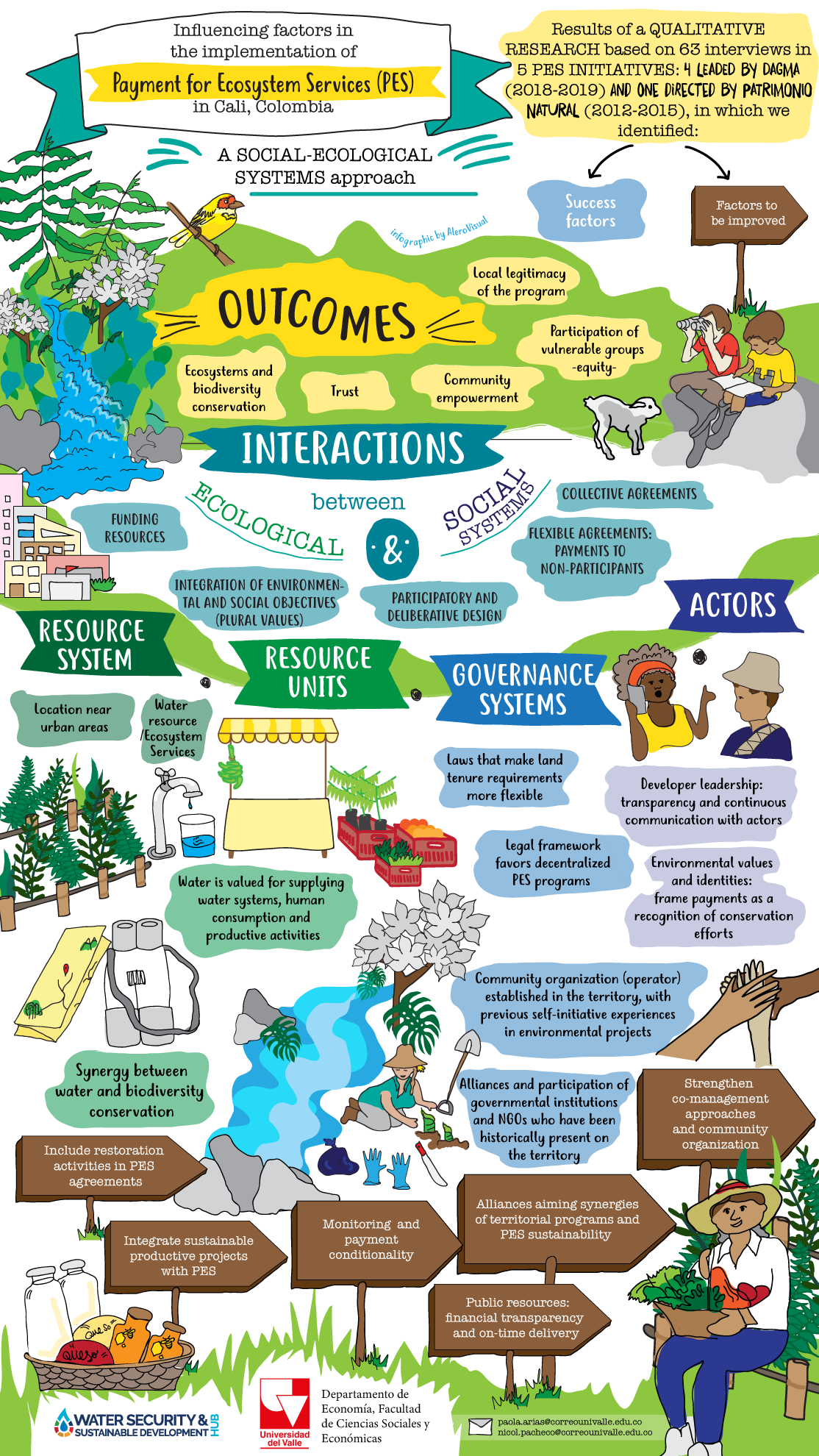Payments for ecosystem services
Identifying the influencing factors in the implementation of payment for ecosystem services
30 May 2022
This piece has been updated since it first appeared to incorporate Paola Arias Arévalo's thoughts and responses to World Environment Day 2022.
There is one Earth, and community and plural-based PES could help both society and nature to thrive within our common home, by fostering the multiple human-nature relationships and associated values of local people. Payments for ecosystem services (PES) could be reframed from merely a market-based instrument for ecosystem conservation to a socio-environmental change catalyser. And that's precisely what researchers from the Colombian Collaboratory have found in recent research developed in rural areas of Cali, Colombia.
From empirical and experimental-based research, it was found that integrating plural human-nature relationships and values in PES facilitates its implementation. Especially because these programs were aimed to reach not only conservation objectives and values, but also social and economic ones, such as: improving quality of life, diversifying income sources through ecotourism and agroecology production, raising environmental awareness and education, and strengthening community-based organisations. Integrating these multiple objectives/values was possible because PES were designed and implemented with a co-construction and participatory approach with local communities. Therefore, developing participatory and plural environmental instruments can play a relevant role in transforming our economies and societies towards a more inclusive, fair, and harmonically connected nature.
Original post, published 8/3/2021
Compiled by our Colombian Collaboratory, this infographic summarises the main factors that influenced the implementation of five payment programmes for water environmental services in the Municipality of Cali, Colombia.
The research was led by Paola Arias Arévalo and Nicol Pachecho Valdés. If you have any questions or would like to find out more about this research, please contact Paola Arias-Arévalo: paola.arias@correounivalle.edu.co


Payments for ecosystem services
Payments for ecosystem services (PES) have been conceptualised as market-based solutions aimed at the conservation of ecosystem services. They have been promoted as an effective instrument to achieve ecosystem conservation, whereby payments are made to participants under the condition that they will maintain land uses that favour ecosystem conservation and provision.
However, the literature on PES has shown that the institutional arrangements resulting from the implementation of these programmes are diverse. Some have been implemented with a top-down approach, whilst others have been developed with a co-construction and participatory approach in which local worldviews and values have been integrated.
The social-ecological systems approach developed by Elinor Ostrom and collaborators is a useful lens to understand this institutional complexity and the emergency properties of policy design and implementation in specific contexts. For example, in Colombia, there is a diverse range of ecosystems and cultures. Therefore, blueprints for PES design and implementation may need to be adapted to the specific socio-ecological characteristics of the territories in which they are implemented. This research was aimed at recognising the main factors that influenced the implementation of these programmes in the socio-ecological contexts of the Municipality of Cali, Colombia.
Among the factors that positively influenced PES implementation were integration of plural values and objectives in PES programmes; providing support for both sustainable productive projects and community-based organisations; and using a participatory and deliberative approach, among others. On the other hand, some of the factors to improve are integration of ecosystem restoration activities; improving monitoring and payment conditionality; and the integration of sustainable productive projects.



